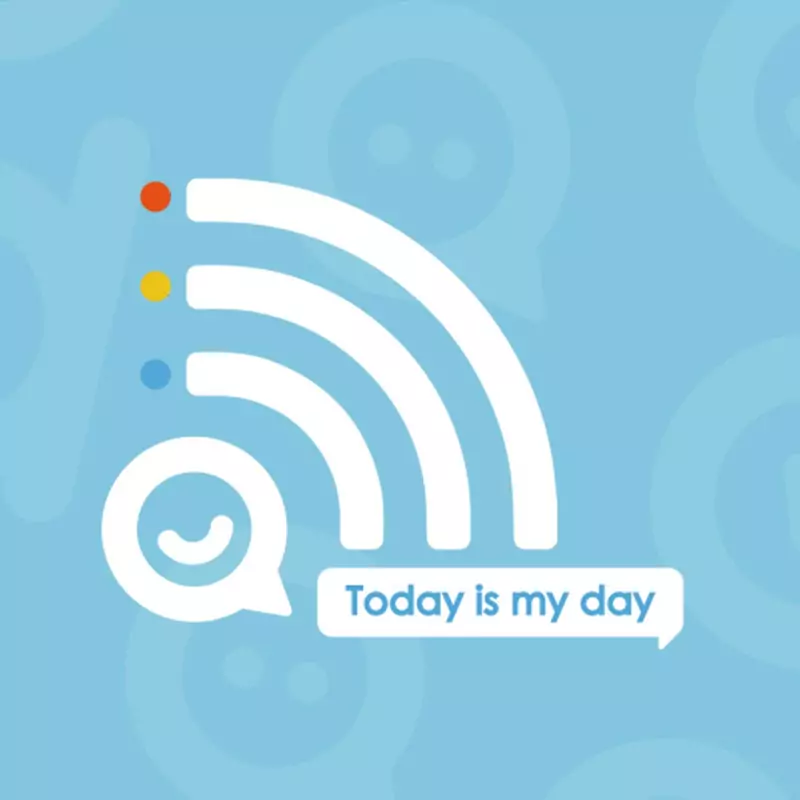雖然這篇diarrhea英文鄉民發文沒有被收入到精華區:在diarrhea英文這個話題中,我們另外找到其它相關的精選爆讚文章
在 diarrhea英文產品中有17篇Facebook貼文,粉絲數超過1萬的網紅吉娜英文,也在其Facebook貼文中提到, 大家晚安! 新的課程影片上傳,今天的課程是冠狀病毒的症狀symptom,課程有兩個部分,第一個部分是由我講解,第二個部分是美國老師Kim的朗讀。這些實用句是Kim撰寫,道地的口說美語,可以很輕鬆的應用在日常生活之中。 最近無症狀感染者是防疫的重點 無症狀的 asymptomatic 冠狀病毒14...
同時也有7部Youtube影片,追蹤數超過1萬的網紅謝東穎整形外科,也在其Youtube影片中提到,【深夜談心】一年馬偕兒科經驗分享!最後選整形外科的原因?醫學生涯如何規劃?醫學系選科心路歷程|依心唯美 謝東穎醫師 談心系列第一集👉🏻https://youtu.be/2xPvoutrGcA 談心系列第二集✨ 在一萬訂閱快問快答中 分享了幾個工作上遇到的小故事 一時興起就想跟大家講古 分享一下...
「diarrhea英文」的推薦目錄
- 關於diarrhea英文 在 看ig學英文 Instagram 的最佳貼文
- 關於diarrhea英文 在 看ig學英文 Instagram 的精選貼文
- 關於diarrhea英文 在 辣媽英文天后 林俐 Carol Instagram 的最佳貼文
- 關於diarrhea英文 在 吉娜英文 Facebook 的精選貼文
- 關於diarrhea英文 在 練健輝 Lian Kien Hui Facebook 的最讚貼文
- 關於diarrhea英文 在 洪欣熱血學英文 Facebook 的最讚貼文
- 關於diarrhea英文 在 謝東穎整形外科 Youtube 的最佳解答
- 關於diarrhea英文 在 Today is my day Youtube 的精選貼文
- 關於diarrhea英文 在 吉娜英文 Youtube 的最佳貼文
diarrhea英文 在 看ig學英文 Instagram 的最佳貼文
2021-03-03 16:17:14
連假哪裡都沒去 都在廁所渡過😭 ✍🏻補充:diarrhea 是口語用法 diarrhoea 比較偏醫學上用法 兩個都可以用喔👍🏻 【劍橋辭典例句參考】 Antibodies from the mother's milk line the baby's intestines and ...
diarrhea英文 在 看ig學英文 Instagram 的精選貼文
2021-03-08 06:06:05
分享你遲到最常說的理由~ 記得國中我同學遲到的理由是扶老奶奶過馬路... 重點是老師還給過🤨 diarrhea = diarrhoea 兩種拼法都可以哦!前面為美式後面是英式~ 【單字例句】 I missed the bus this morning because I ov...
diarrhea英文 在 辣媽英文天后 林俐 Carol Instagram 的最佳貼文
2020-10-08 05:53:43
俐媽手中拿的, 不會是你今天的主食吧🤣 這可是熱量滿滿滿呢! 但是, 能夠和家人團聚, 笑談家常, 就是幸福~ 謝謝模H寶貝今晚和我一起慶中秋🎑! ———————————————————— 🌕 俐媽英文教室—中秋節篇: • annual/ yearly (a.) 一年一度的 • festive ...
-
diarrhea英文 在 謝東穎整形外科 Youtube 的最佳解答
2021-07-28 20:00:11【深夜談心】一年馬偕兒科經驗分享!最後選整形外科的原因?醫學生涯如何規劃?醫學系選科心路歷程|依心唯美 謝東穎醫師
談心系列第一集👉🏻https://youtu.be/2xPvoutrGcA
談心系列第二集✨
在一萬訂閱快問快答中
分享了幾個工作上遇到的小故事
一時興起就想跟大家講古
分享一下在成為 #整外醫師 前
曾經擔任過一年的 #兒科醫師 的經歷👶🏻
想讓對未來工作選擇迷惘的
無論是醫學系學生、實習醫生或住院醫生
都能敲敲敲找到自己的出路🔨
有更多想跟我分享的
都歡迎在下方留言問問題喔!
💡影片重點
00:00 搶先看
01:23 成為兒科醫師的原因
01:48 馬偕兒科住院醫師經歷分享
03:54 轉科的原因
05:12 給猶豫志業的學弟妹的一段話
07:00 選擇當整外醫師的原因
08:30 適合當整外醫師的原因
09:16 東東的逃獄理論
10:00 名言佳句時間
✏️相關文章
謝氏縮唇手術
https://follow-heart.com/pursed_lips
縮唇合併臉型輪廓調整
https://follow-heart.com/lip_face
外傷唇/唇顎裂修補手術
https://follow-heart.com/Cleft_lip
▸▸歡迎合作洽談:[email protected]◂◂
✉️聯絡我們
預約諮詢|https://follow-heart.com/chat_li
臉書粉專|https://follow-heart.com/chat_fb
IG追起來|https://follow-heart.com/chat_ig
#兒科醫師 #經驗分享 #整形外科 #外科醫師 #工作選擇迷惘 #職涯規劃 #醫學系選科心得分享
#依心唯美 #依心唯美整形外科 #謝東穎醫師 #謝東穎整形外科 -
diarrhea英文 在 Today is my day Youtube 的精選貼文
2021-06-04 20:00:16訂閱《Today is my day》👉https://bit.ly/2Roz2qd
#宇宙人外信 全收錄:https://bit.ly/3wO4KwA
#宇宙人外信 來IG找我們玩吧:https://bit.ly/2PNGJ8J
日本東海道新幹線一名駕駛因腹痛,竟離開駕駛席跑去「蹲廁所」長達3分多鐘,列車就這樣在沒有駕駛員的情況下,如果發生類似這種"內急事件"在不同場合時又該怎麼表達呢?
中英日韓四聲道
🌍英文主播:Ethan &國際編譯:Ryan/隔壁老王
📺從時事新聞教你英日韓單字
🗣 閒話家常學微知識
💬讓你輕鬆掌握生活用語
想聲歷其境,來收聽高音質Podcast
搜尋訂閱★宇宙人外信
《Apple Podcast》: http://apple.co/3eSztCS
《Spotify》:http://spoti.fi/3cEwlrF
《SoundOn》:http://bit.ly/3bUeVYU
《KKBOX》:http://bit.ly/2OzeQ42
《Google Podcast》:https://bit.ly/3vUvBr1
#Podcast #內急 #上廁所 -
diarrhea英文 在 吉娜英文 Youtube 的最佳貼文
2020-04-14 20:04:29吉娜手機板會員課程
更多的新冠病毒課程,在這裡喔
http://www.ginateacher.com/
輕鬆背5000英文單字影片
如何快速背單字
https://youtu.be/wypSE6WTeBU
輕鬆背5000單字會員課程
打字背單字課程 (電腦)
http://www.wordsgo-members.com/
輕鬆背5000單字
基礎單字試用版本 (電腦)
http://www.wordsgo.com/2000w/2000menu.html
加入吉娜英文FB 粉絲頁
學習更多道地美式口語英文
https://www.facebook.com/wordsgo/
吉娜提供教學服務:
KK音標課程
基礎英文從頭學起
學好英文諮詢
請寫信到
webmaster@wordsgo.com
病毒14個症狀:
第1個症狀:發燒 fever
第2個症狀:喉嚨痛 sore throat
第3個症狀:頭痛 headache
第4個症狀:咳嗽 dry cough
第5個症狀:呼吸短促,呼吸急促 shortness of breath
第6個症狀:嗅覺 sense of smell
第7個症狀:味覺 sense of taste
第8個症狀:腹瀉 diarrhea
第9個症狀:倦怠fatigue
第10個症狀:噁心;嘔吐感 nausea
第11個症狀:寒顫;發冷 chills
第12個症狀:食慾不振 loss of appetite
第13個症狀:全身酸痛 body aches
第14個症狀:肌肉酸痛 muscle aches
冠狀病毒一直在變異,很多症狀會改變,每個人的症狀也不同,這裡我列出常看到的14個症狀。我覺得似乎跟感冒和流感很像,其中比較不同的是乾咳,呼吸急促,以及失去嗅覺和味覺。







diarrhea英文 在 吉娜英文 Facebook 的精選貼文
大家晚安!
新的課程影片上傳,今天的課程是冠狀病毒的症狀symptom,課程有兩個部分,第一個部分是由我講解,第二個部分是美國老師Kim的朗讀。這些實用句是Kim撰寫,道地的口說美語,可以很輕鬆的應用在日常生活之中。
最近無症狀感染者是防疫的重點
無症狀的 asymptomatic
冠狀病毒14個症狀:
每個人的症狀不同,跟感冒和流感蠻像的
第1個症狀:發燒 fever
第2個症狀:喉嚨痛 sore throat
第3個症狀:頭痛 headache
第4個症狀:咳嗽 dry cough
第5個症狀:呼吸短促,呼吸急促 shortness of breath
第6個症狀:嗅覺 sense of smell
第7個症狀:味覺 sense of taste
第8個症狀:腹瀉 diarrhea
第9個症狀:倦怠fatigue
第10個症狀:噁心;嘔吐感 nausea
第11個症狀:寒顫;發冷 chills
第12個症狀:食慾不振 loss of appetite
第13個症狀:全身酸痛 body aches
第14個症狀:肌肉酸痛 muscle aches
歡迎分享,要幫我按讚,觸擊率才會多一點,才會有更多的粉絲看到這則貼文。謝謝大家!
吉娜線上教學招生 (Skype):
我個人一對一家教招生,英文從頭學起,學習基礎英文的同時,就學習口語連音、變音和消音,讓你能輕鬆口說英文。還有KK音標課程,學好發音,改善聽說。(私訊我即可)
http://yt1.piee.pw/QGKRU
diarrhea英文 在 練健輝 Lian Kien Hui Facebook 的最讚貼文
#PleaseShare #COVID19
#武漢肺炎防疫重點英文版
According to the WHO and Chinese officials, the incubation period of the novel corona virus between disease exposure to the onset of symptoms ranges from 2 to 12 days (7 days on average).
However,based on the general view,the incubation period of COVID-19could be up to 14 days.
Based on the current literature related toCOVID-19, the clinical expression ofCOVID-19caninclude fever, weakness, respiratory symptoms (mainly dry cough) and in some cases,breathing difficulties can follow.
About 1 to 2 percent of the patients might develop severe pneumonia, adult respiratory distress syndrome (ARDS), multiple organ failure or shock, leading to death.Most of the deceased patients had concurrent chronic disease such as diabetes, liver disease, kidney disease or cardiovascular disease.
*Prevension
There is no vaccine to prevent corona virus infections. Daily preventative steps to take include avoiding affected regions, avoiding local hospitals or clinics unless necessary, avoiding eating uncooked meat or eggs,avoiding being in contact with animals and dead animals,and maintain good health habits.
Steps to practice good health habits are as follows:
Please keep your hands clean and wash your hands with soap frequently. If soap and water are not available, use an alcohol-based hand sanitizers.
However, soap and water should be used preferentially if hands are visibly dirty. You should wash your hands immediately after coughing or sneezing; after using the toilet; and if your hands touch any secretions from your respiratory tract, stool or body fluids such as urine. In addition, please refrain from touching your eyes, nose and mouth with your hands.
Pay attention to respiratory tract hygiene and cough etiquette.
a. If you have respiratory symptoms, please wear a medical-grade face mask and keep at least 1 meter away from others while talking to them.
b. If your hands touch any secretions from your respiratory tract, please wash your hands with soap and water thoroughly.
c. If you develop a cough or other respiratory symptoms, you should wear a medical face mask. When your mask is contaminated by secretions of nose or mouth, please fold it, throw it into the trash immediately, and wear a new one.
d. You should cover your mouth and nose with a tissue or handkerchief when coughing or sneezing. If you don’t have a tissue or handkerchief, cough or sneeze into your upper sleeve.
*Use of masks
a. Medical-grade face masks are mainly used for preventing the spread of disease and protect people around you. People are advised to wear medical masks when you go to see a doctor or accompany a patient; when you have symptoms of respiratory infections; and if you go out with people with weak immune systems or chronic disease. You should wash your hands frequently to protect yourself from catching illness in other situations.
b. To wear a medical mask properly, you should ensure that the water-repellent side (usually green) faces outwards. You should not remove your mask when talking, coughing or sneezing to prevent the spread of disease. You should replace your face mask if it is visibly soiled.
c. Steps to put on a medical face mask:
i. Open the package and examine if the mask is damaged.
ii. Put the elastic bands around both ears, fit the metallic strip over the nose bridge and extend the mask to cover your chin.
iii. Press firmly down on the metallic strip so that it fits around your nose
iv. Ensure that there are no gaps
d. You don’t need a face mask in open spaces, including walking on the streets or doing outdoor exercises.
*What to do while sick
If you have flu-like symptoms, including fever, headache, runny nose, sore throat, cough, muscle aches, fatigue/tiredness, and sometimes diarrhea. After your symptoms develop, you should rest, take and record your temperature regularly, drink water and eating nourishing food, observe your condition and take symptom-relieving drugs such as pain relievers/fever reducers to observe if they work.
You should rest at home for at least 24 hours after the symptoms improve.
You should seek medical attention if your fever lasts longer than 24 hours or is accompanied by other symptoms, such as purulent nasal discharge and purulent sputum, severe vomiting or shortness of breath.
You should inform the doctor of any history of travel, occupation, contact, and cluster (TOCC) when seeking medical attention.
You should follow the triage arrangement at the hospital if you have a fever to ensure efficient medical care and the health of medical personnel.
You should avoid going to school or work, attending gatherings and visiting crowded or poorly-ventilated public spaces while sick. You should avoid using public transportation to prevent the spread of disease if you need to go outside.
While staying at home, you should stay in a specific room, keep good airflow in the house, and avoid close contact with other people in your home, such as eating at the same table, kissing, hugging or sexual contact.
People living with the sick person should also pay attention to personal hygiene, wash hands frequently and refrain from touching eyes, nose and mouth with hands. Babies, children and the elderly or people with compromised immune system in the same household must keep at least 1 meter away from the sick person.
If the living environment requires disinfection, you can apply 1:100 diluted bleach (500 ppm).
That is, household chlorine bleach (a 5-6% sodium hypochlorite solution, providing 50,000–60,000ppm available chlorine) is diluted in water at 1:100 to clean object surfaces, such as doorknobs, desks and switches.
You can use disposable teaspoons (one teaspoon is about 20 cc), small Yakult bottles (one bottle is about 100 cc) and large plastic bottles (one bottle is about 1,250 cc) and follow the instructions below to make diluted bleach: �
a. Large amount: mix 100 cc of bleach (5 teaspoons or 1 small Yakult bottle) in 10 liters of water (8 large plastic bottles) and fully stir the solution before using.
b. Small amount: pour 10 cc of bleach into 1 liter of water and fully stir the solution before using.
For more information:
https://www.cdc.gov.tw/File/Get/HAvRHGs_EjKeROHYmzWm5w
diarrhea英文 在 洪欣熱血學英文 Facebook 的最讚貼文
經典「感冒」台詞,看過表示⋯⋯😷
我感冒cold / 流感flu、發燒、鼻塞、喉嚨痛,英文怎麼說💉
💊 I’m sick.
我生病了。
💊 I have a cold.
我感冒了。
💊 I have caught the flu.
我得到流行感冒。
😵頭暈目眩的 → Dizzy
🤢噁心 → Nausea
Nausea [ˋnɔʃɪə] (n.) 噁心/ 作嘔
e.g. He vomited last night and still feels nausea.
他昨晚吐了而且現在還是想吐。
🤮補充:vomit = 嘔吐
🤒發燒 → Fever
Fever (n.) 發燒/ 狂熱
e.g. I think I have a slight fever.
我覺得我好像有點發燒。
補充:退燒= reduce the fever = bring down the fever
😴嗜睡的 → Drowsy
Drowsy [ˋdraʊzɪ] (a.) 昏昏欲睡的
e.g. These tablets make me drowsy.
這些藥片使我昏昏欲睡。
😫喉嚨痛 → Sore throat
e.g. I woke up with a sore throat and stuffy nose this morning.
我一早起來就喉嚨痛跟鼻塞。
🤧打噴嚏 → Sneeze
Sneeze [sniz] (n.)(v.) 噴嚏;打噴嚏
e.g. Her face wrinkles when she is about to sneeze.
她的臉在她快打噴嚏時皺了起來。
🤧流鼻涕 → Runny nose
e.g. I have a sore throat and runny nose.
我喉嚨痛還有流鼻涕。
補充:我喉嚨裡有些痰 = My throat is filled with phlegm [flɛm].
I have a blocked/stuffy/congested nose.
I have nasal congestion.
我鼻塞。
💩拉肚子 → Diarrhea
Diarrhea [ˏdaɪə`rɪə] (n.) 腹瀉
e.g. Acute diarrhea usually results from infection.
急性腹瀉通常是由感染引起的。
補充:
1.便祕 = constipation
2.肚子痛 = stomachache
🤕疼痛的種類
pain 疼痛
back pain 背痛
*若是想要形容身理或是心理上的痛讓你「感到痛苦」,你可以說 It’s painful!
ache 持續的疼(隱)痛
headache 頭痛
Due to the lack of sleep over the past few days, I have a bad headache.
因為過去幾天的睡眠不足導致我現在頭很痛。
😬toothache 牙齒痛
😖stomachache 肚子痛
hurt 受傷(痛)
口語上來說也有人會用 hurt 來形容「痛」,像是 My head hurts(我頭痛)。但其實 hurt 準確來說是外在受傷的痛。
I stubbed my toe on the corner of the table. It hurts a lot!
我的腳指頭踢到桌腳,超痛的!
發炎或感染
inflammation 發炎
throat inflammation 喉嚨發炎
infection 感染
eye infection 眼睛感染
urinary tract infection 尿道感染
sore 因為感染、受傷或過度使用造成的酸或痛
sore eyes 眼睛痠痛
sore neck 脖子酸
sore throat 喉嚨痛
constipation 便秘
I am constipated.
我便秘。
diarrhea 腹瀉
food poison 食物中毒
cramp 抽筋
injury 因外在事故造成身體受傷
sprain 扭傷
I sprained my ankle.
我扭到腳踝。
😷allergy 過敏
food/dust allergy 食物/塵蟎 過敏
I’m allergic to …… 我對於 …… 過敏
prescription 處方簽
pharmacy/drug store 藥局
千萬千萬要記住,「吃」藥在英文中是 “take” medicine。無論是藥丸,藥粉,或藥水都要用 take 這個動詞喔!